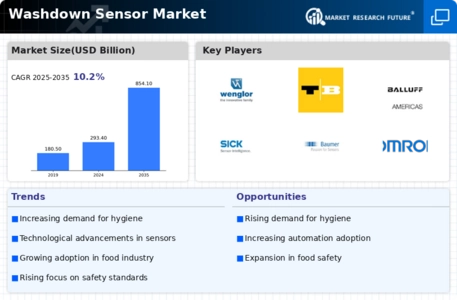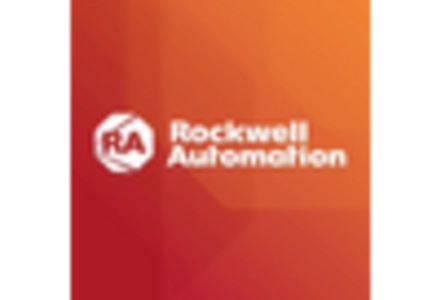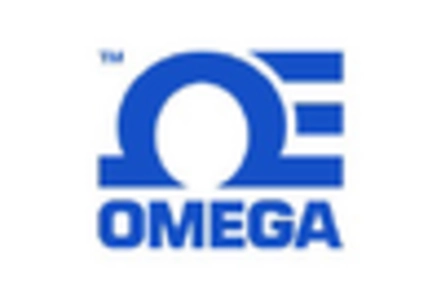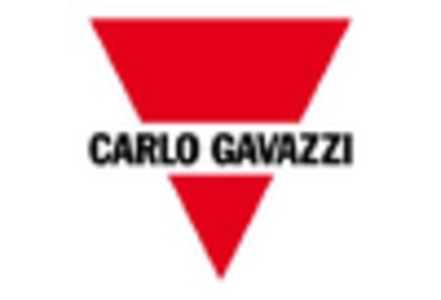-
EXECUTIVE SUMMARY
-
MARKET INTRODUCTION
-
Definition
-
Scope of the Study
- Research Objective
- Assumptions
- Limitations
-
RESEARCH METHODOLOGY
-
3.1.
-
Overview
-
Data Mining
-
Secondary Research
-
Primary Research
- Primary Interviews and Information Gathering Process
- Breakdown
-
of Primary Respondents
-
Forecasting Model
-
Market Size Estimation
- Bottom-Up Approach
- Top-Down Approach
-
Data Triangulation
-
Validation
-
MARKET DYNAMICS
-
Overview
-
Drivers
-
Restraints
-
Opportunities
-
MARKET FACTOR ANALYSIS
-
5.1.
-
Value Chain Analysis
-
Porter’s Five Forces Analysis
- Bargaining
- Bargaining Power of Buyers
- Threat of
- Threat of Substitutes
- Intensity of Rivalry
-
Power of Suppliers
-
New Entrants
-
COVID-19 Impact Analysis
- Market Impact Analysis
- Regional
- Opportunity and Threat Analysis
-
Impact
-
GLOBAL WASHDOWN SENSOR
-
MARKET,BY TYPE
-
Overview
-
Stainless Steel Sensor
-
Plastic
-
Sensor
-
Others
-
GLOBAL WASHDOWN SENSOR MARKET,BY APPLICATION
-
Overview
-
Food and Beverage
-
Packaging
-
Pharmaceutics
-
Others
-
GLOBAL WASHDOWN SENSOR MARKET, BY REGION
-
Overview
-
North America
- US
- Canada
-
Europe
- France
- UK
- Italy
- Spain
- Rest of Europe
-
8.2.1.
-
Germany
-
Asia-Pacific
- China
- India
- Japan
- South Korea
- Australia
- Rest of
-
Asia-Pacific
-
Rest of the World
- Middle East
- Africa
- Latin America
-
COMPETITIVE LANDSCAPE
-
Overview
-
9.2.
-
Competitive Analysis
-
Market Share Analysis
-
Major Growth Strategy
-
in the Global Washdown Sensor Market,
-
Competitive Benchmarking
-
9.6.
-
Leading Players in Terms of Number of Developments in the Global Washdown Sensor
-
Market,
-
Key developments and Growth Strategies
- New ProductLaunch/Service
- Merger &Acquisitions
- Joint Ventures
- Sales & Operating Income,2022
- Major Players R&D Expenditure.2022
-
Deployment
-
9.8.
-
Major Players Financial Matrix
-
COMPANY PROFILES
-
10.1.
-
Wenglor;
-
10.1.3.
-
Products Offered
-
10.1.6.
-
Key Strategies
-
10.2.2.
-
Financial Overview
-
10.3.1.
-
Company Overview
-
10.4.3.
-
Products Offered
-
10.4.6.
-
Key Strategies
-
Overview
-
10.5.5.
-
SWOT Analysis
-
Overview
-
10.6.4.
-
Key Developments
-
10.7.
-
Delta;
-
10.7.3.
-
Products Offered
-
10.7.6.
-
Key Strategies
-
10.8.2.
-
Financial Overview
-
10.9.1.
-
Company Overview
-
Overview
-
10.11.4.
-
Key Developments
-
10.12.
-
Eaton;
-
10.12.3.
-
Products Offered
-
10.12.6.
-
Key Strategies
-
Offered
-
10.14.6.
-
Key Strategies
-
Company Overview
-
Financial Overview
-
Key Developments
-
SWOT Analysis
-
Turck Banner;
- Company Overview
- Products Offered
- Key Developments
- SWOT Analysis
- Key Strategies
-
Balluff;
- Financial Overview
- Products Offered
- Key Developments
- SWOT Analysis
- Key Strategies
-
SICK;
- Company Overview
- Financial Overview
- Key Developments
- SWOT Analysis
-
Baumer;
- Company Overview
- Financial
- Products Offered
- Key Developments
- Key Strategies
-
OMRON;
- Company
- Financial Overview
- Products Offered
- SWOT Analysis
- Key Strategies
- Company Overview
- Financial Overview
- Key Developments
- SWOT Analysis
-
Pepperl+Fuchs;
- Company Overview
- Products Offered
- Key Developments
- SWOT Analysis
- Key Strategies
-
Keyence;
- Financial Overview
- Products Offered
- Key Developments
- SWOT Analysis
- Key Strategies
-
IFM Electronic
- Company Overview
- Financial Overview
- Products Offered
- Key Developments
- SWOT Analysis
- Key Strategies
-
Rockwell Automation;
- Company
- Financial Overview
- Products Offered
- SWOT Analysis
- Key Strategies
- Company Overview
- Financial Overview
- Key Developments
- SWOT Analysis
-
Omega Engineering;
- Company Overview
- Financial Overview
- Products Offered
- Key Developments
- SWOT Analysis
- Key Strategies
-
Carlo Gavazzi;
- Company Overview
- Financial Overview
- Products
- Key Developments
- SWOT Analysis
-
APPENDIX
-
References
-
Related Reports
-
-
LIST OF TABLES
-
GLOBAL WASHDOWN SENSOR MARKET, SYNOPSIS,
-
GLOBAL WASHDOWN SENSOR MARKET, ESTIMATES &FORECAST, 2025-2034(USD
-
BILLION)
-
GLOBAL WASHDOWN SENSOR MARKET,BY TYPE, 2025-2034(USD BILLION)
-
GLOBAL WASHDOWN SENSOR MARKET,BY APPLICATION, 2025-2034(USD BILLION)
-
NORTH AMERICA: WASHDOWN SENSOR MARKET,BY TYPE, 2025-2034(USD BILLION)
-
NORTH AMERICA: WASHDOWN SENSOR MARKET,BY APPLICATION, 2025-2034(USD BILLION)
-
US: WASHDOWN SENSOR MARKET,BY TYPE, 2025-2034(USD BILLION)
-
TABLE
-
US: WASHDOWN SENSOR MARKET,BY APPLICATION, 2025-2034(USD BILLION)
-
TABLE 9
-
CANADA: WASHDOWN SENSOR MARKET,BY TYPE, 2025-2034(USD BILLION)
-
CANADA:
-
WASHDOWN SENSOR MARKET,BY APPLICATION, 2025-2034(USD BILLION)
-
EUROPE:
-
WASHDOWN SENSOR MARKET,BY TYPE, 2025-2034(USD BILLION)
-
EUROPE: WASHDOWN
-
SENSOR MARKET, BY APPLICATION, 2025-2034(USD BILLION)
-
GERMANY: WASHDOWN
-
SENSOR MARKET,BY TYPE,2025-2034(USD BILLION)
-
GERMANY: WASHDOWN SENSOR
-
MARKET, BY APPLICATION, 2025-2034(USD BILLION)
-
FRANCE: WASHDOWN SENSOR
-
MARKET,BY TYPE, 2025-2034(USD BILLION)
-
FRANCE: WASHDOWN SENSOR MARKET,
-
BY APPLICATION, 2025-2034(USD BILLION)
-
ITALY: WASHDOWN SENSOR MARKET,BY
-
TYPE, 2025-2034(USD BILLION)
-
ITALY: WASHDOWN SENSOR MARKET, BY APPLICATION,
-
SPAIN: WASHDOWN SENSOR MARKET,BY TYPE, 2025-2034(USD
-
BILLION)
-
SPAIN: WASHDOWN SENSOR MARKET, BY APPLICATION, 2025-2034(USD
-
BILLION)
-
UK: WASHDOWN SENSOR MARKET,BY TYPE, 2025-2034(USD BILLION)
-
UK: WASHDOWN SENSOR MARKET, BY APPLICATION, 2025-2034(USD BILLION)
-
REST OF EUROPE: WASHDOWN SENSOR MARKET,BY TYPE, 2025-2034(USD BILLION)
-
REST OF EUROPE: WASHDOWN SENSOR MARKET, BY APPLICATION, 2025-2034(USD
-
BILLION)
-
ASIA-PACIFIC: WASHDOWN SENSOR MARKET,BY TYPE, 2025-2034(USD
-
BILLION)
-
ASIA-PACIFIC: WASHDOWN SENSOR MARKET, BY APPLICATION, 2025-2034(USD
-
BILLION)
-
JAPAN: WASHDOWN SENSOR MARKET,BY TYPE, 2025-2034(USD BILLION)
-
JAPAN: WASHDOWN SENSOR MARKET, BY APPLICATION, 2025-2034(USD BILLION)
-
CHINA: WASHDOWN SENSOR MARKET,BY TYPE, 2025-2034(USD BILLION)
-
TABLE
-
CHINA: WASHDOWN SENSOR MARKET, BY APPLICATION, 2025-2034(USD BILLION)
-
TABLE
-
INDIA: WASHDOWN SENSOR MARKET,BY TYPE, 2025-2034(USD BILLION)
-
INDIA:
-
WASHDOWN SENSOR MARKET, BY APPLICATION, 2025-2034(USD BILLION)
-
AUSTRALIA:
-
WASHDOWN SENSOR MARKET,BY TYPE, 2025-2034(USD BILLION)
-
AUSTRALIA:
-
WASHDOWN SENSOR MARKET, BY APPLICATION, 2025-2034(USD BILLION)
-
SOUTH
-
KOREA: WASHDOWN SENSOR MARKET,BY TYPE, 2025-2034(USD BILLION)
-
SOUTH
-
KOREA: WASHDOWN SENSOR MARKET, BY APPLICATION, 2025-2034(USD BILLION)
-
TABLE
-
REST OF ASIA-PACIFIC: WASHDOWN SENSOR MARKET,BY TYPE, 2025-2034(USD BILLION)
-
REST OF ASIA-PACIFIC: WASHDOWN SENSOR MARKET, BY APPLICATION, 2025-2034(USD
-
BILLION)
-
REST OF THE WORLD: WASHDOWN SENSOR MARKET,BY TYPE, 2025-2034(USD
-
BILLION)
-
REST OF THE WORLD: WASHDOWN SENSOR MARKET, BY APPLICATION,
-
MIDDLE EAST: WASHDOWN SENSOR MARKET,BY TYPE,
-
MIDDLE EAST: WASHDOWN SENSOR MARKET, BY APPLICATION,
-
AFRICA: WASHDOWN SENSOR MARKET,BY TYPE, 2025-2034(USD
-
BILLION)
-
AFRICA: WASHDOWN SENSOR MARKET, BY APPLICATION, 2025-2034(USD
-
BILLION)
-
LATIN AMERICA: WASHDOWN SENSOR MARKET,BY TYPE, 2025-2034(USD
-
BILLION)
-
LATIN AMERICA: WASHDOWN SENSOR MARKET, BY APPLICATION, 2025-2034(USD
-
BILLION)
-
LIST OF FIGURES
-
RESEARCH PROCESS
-
MARKET
-
STRUCTURE FOR THE GLOBAL WASHDOWN SENSOR MARKET
-
MARKET DYNAMICS FOR
-
THE GLOBAL WASHDOWN SENSOR MARKET
-
GLOBAL WASHDOWN SENSOR MARKET, SHARE
-
(%), BY TYPE, 2022
-
GLOBAL WASHDOWN SENSOR MARKET, SHARE (%), BY APPLICATION,
-
GLOBAL WASHDOWN SENSOR MARKET, SHARE (%), BY REGION, 2022
-
NORTH AMERICA: WASHDOWN SENSOR MARKET, SHARE (%), BY REGION, 2022
-
EUROPE: WASHDOWN SENSOR MARKET, SHARE (%), BY REGION, 2022
-
FIGURE
-
ASIA-PACIFIC: WASHDOWN SENSOR MARKET, SHARE (%), BY REGION, 2022
-
FIGURE 10
-
REST OF THE WORLD: WASHDOWN SENSOR MARKET, SHARE (%), BY REGION, 2022
-
FIGURE
-
GLOBAL WASHDOWN SENSOR MARKET: COMPANY SHARE ANALYSIS, 2022 (%)
-
FIGURE 12
-
WENGLOR: FINANCIAL OVERVIEW SNAPSHOT
-
WENGLOR: SWOT ANALYSIS
-
FIGURE
-
TURCK BANNER:FINANCIAL OVERVIEW SNAPSHOT
-
TURCK BANNER:SWOT ANALYSIS
-
BALLUFF:FINANCIAL OVERVIEW SNAPSHOT
-
BALLUFF:SWOT ANALYSIS
-
SICK: FINANCIAL OVERVIEW SNAPSHOT
-
SICK:SWOT ANALYSIS
-
BAUMER.:FINANCIAL OVERVIEW SNAPSHOT
-
BAUMER.:SWOT ANALYSIS
-
OMRON:FINANCIAL OVERVIEW SNAPSHOT
-
OMRON:SWOT ANALYSIS
-
DELTA: FINANCIAL OVERVIEW SNAPSHOT
-
DELTA: SWOT ANALYSIS
-
PEPPERL+FUCHS: FINANCIAL OVERVIEW SNAPSHOT
-
PEPPERL+FUCHS:
-
SWOT ANALYSIS
-
KEYENCE: FINANCIAL OVERVIEW SNAPSHOT
-
FIGURE 29
-
KEYENCE: SWOT ANALYSIS
-
IFM ELECTRONIC:FINANCIAL OVERVIEW SNAPSHOT
-
IFM ELECTRONIC:SWOT ANALYSIS
-
ROCKWELL AUTOMATION: FINANCIAL
-
OVERVIEW SNAPSHOT
-
ROCKWELL AUTOMATION: SWOT ANALYSIS
-
FIGURE
-
EATON: FINANCIAL OVERVIEW SNAPSHOT
-
EATON: SWOT ANALYSIS
-
FIGURE
-
OMEGA ENGINEERING: FINANCIAL OVERVIEW SNAPSHOT
-
OMEGA ENGINEERING:
-
SWOT ANALYSIS
-
CARLO GAVAZZI:FINANCIAL OVERVIEW SNAPSHOT
-
FIGURE
-
CARLO GAVAZZI:SWOT ANALYSIS















Leave a Comment